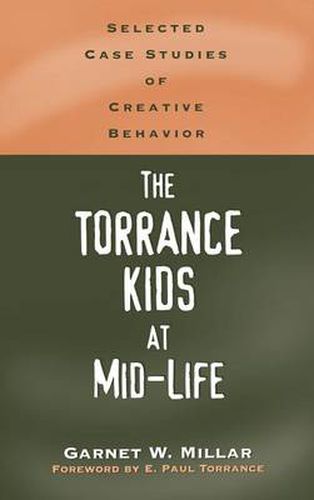Readings Newsletter
Become a Readings Member to make your shopping experience even easier.
Sign in or sign up for free!
You’re not far away from qualifying for FREE standard shipping within Australia
You’ve qualified for FREE standard shipping within Australia
The cart is loading…






An important longitudinal study spanning over 40 years illustrating how specific test scores and other life factors affect creative achievements and individual careers. Never has there been a longitudinal study of creativity of this magnitude. The book describes the original sample of students from two Minneapolis schools in 1958 and the longitudinal study envisioned by Dr. E. Paul Torrance, then director of the Bureau of Educational Research at the University of Minnesota. It explains two follow-up period with the students in 1980 and 1998 with the view of measuring their adult creative achievements. The author in collaboration with Dr. Torrance has selected a sample of ten individuals for case study who serve to illustrate the predicitive validity of the Torrance Tests of Creative Thinking and the factors that support and sustain creativity as individuals live their lives. The case studies describe the individuals’ school years, the first and second follow-up periods and an indepth interview covering topics such as early influences on creativity, career paths and transitions, creative accomplishments, validation of the Manifesto for Children, and reflections on creativity. The study will be of great interest to psychologists, college and university teachers, counselors, educators and parents. Themes are derived from an examination of the case studies and key messages for creative living are proposed.
$9.00 standard shipping within Australia
FREE standard shipping within Australia for orders over $100.00
Express & International shipping calculated at checkout
An important longitudinal study spanning over 40 years illustrating how specific test scores and other life factors affect creative achievements and individual careers. Never has there been a longitudinal study of creativity of this magnitude. The book describes the original sample of students from two Minneapolis schools in 1958 and the longitudinal study envisioned by Dr. E. Paul Torrance, then director of the Bureau of Educational Research at the University of Minnesota. It explains two follow-up period with the students in 1980 and 1998 with the view of measuring their adult creative achievements. The author in collaboration with Dr. Torrance has selected a sample of ten individuals for case study who serve to illustrate the predicitive validity of the Torrance Tests of Creative Thinking and the factors that support and sustain creativity as individuals live their lives. The case studies describe the individuals’ school years, the first and second follow-up periods and an indepth interview covering topics such as early influences on creativity, career paths and transitions, creative accomplishments, validation of the Manifesto for Children, and reflections on creativity. The study will be of great interest to psychologists, college and university teachers, counselors, educators and parents. Themes are derived from an examination of the case studies and key messages for creative living are proposed.